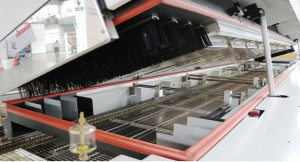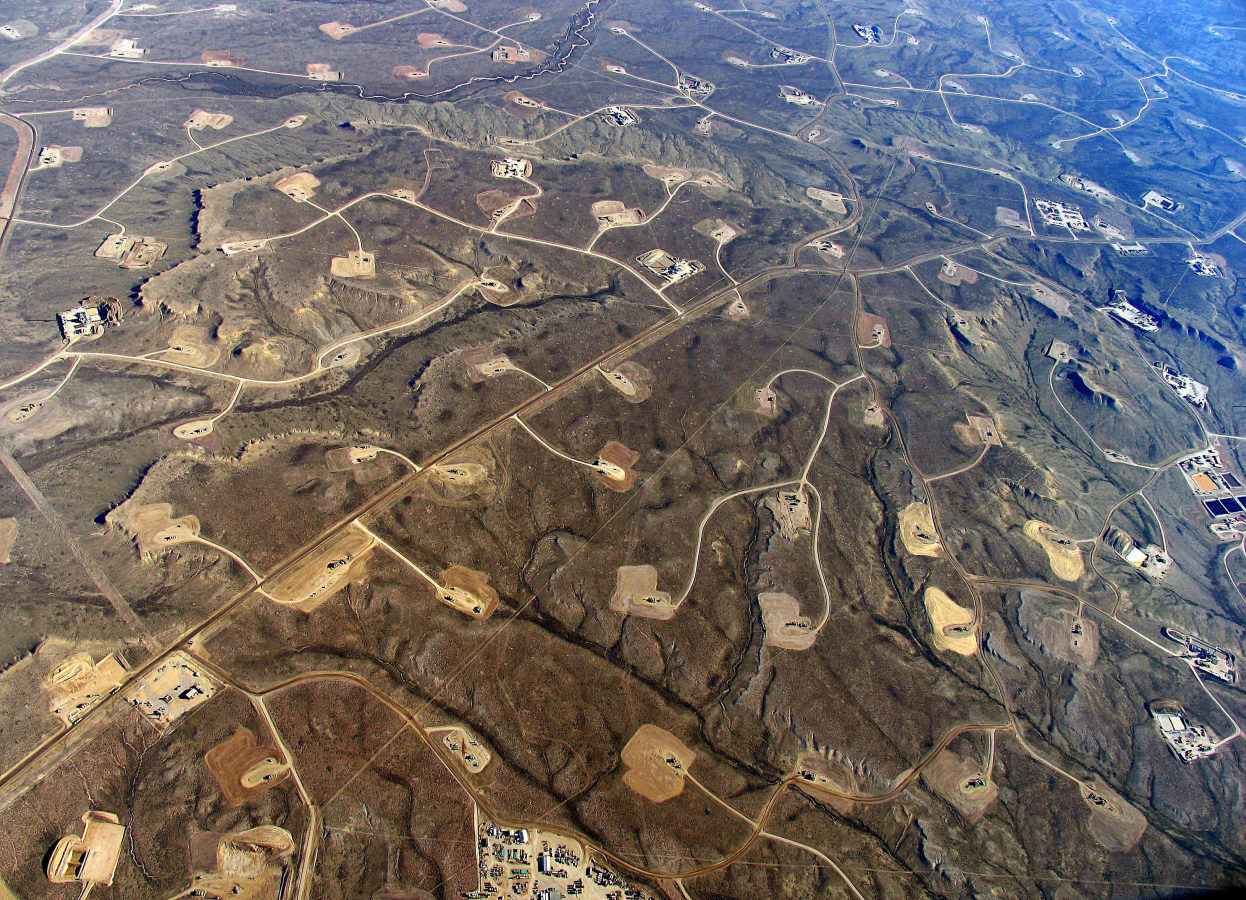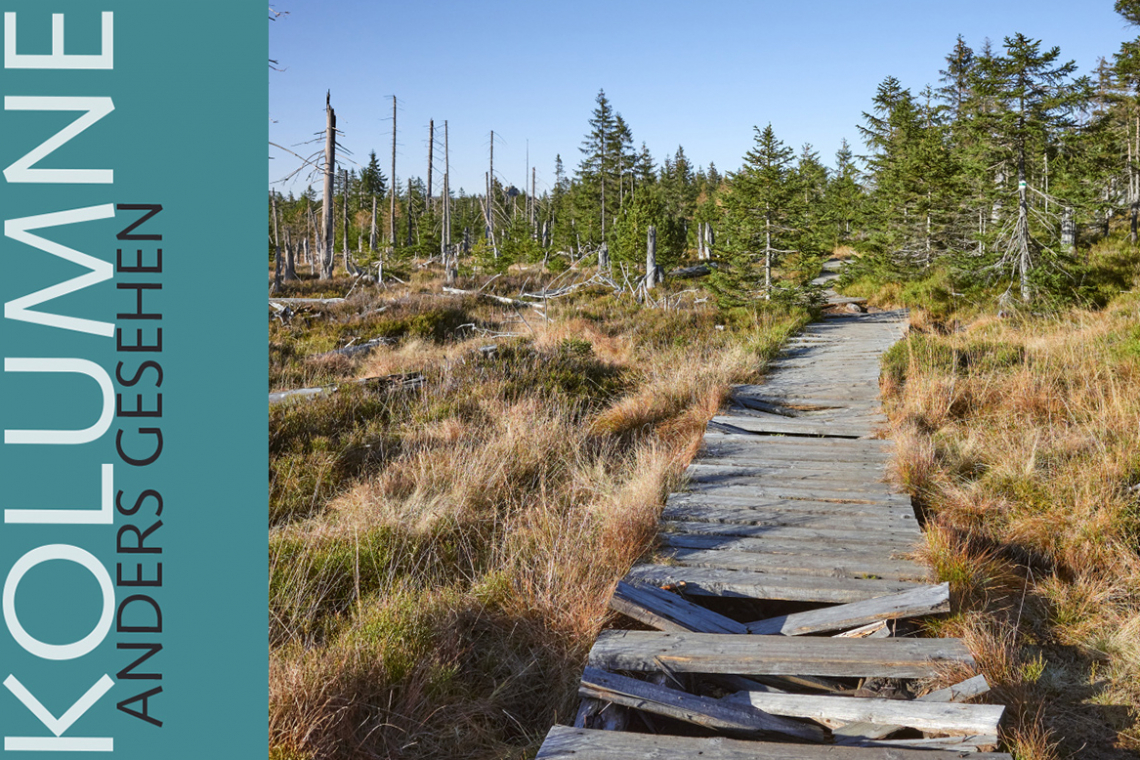Originally, the Holzweg was a forest path used to transport wood (in technical jargon: Rückeweg), which was usually in poor condition and really didn't lead anywhere. Today, wooden paths are built to make it easier for hikers to look over the treetops and take digital photos - 'selfies' are very popular. You might think of these when you read and see the journalistic frenzy of reports about the truants at the 'Fridays for Future' demonstrations.
If global warming is indeed happening and if it is really due to human influence, which is doubted by some serious scientists like Jyrki Kauppinen and Pekka Malmi ("We do not consider computational results as experimental evidence"), then you have to consider where all the harmfulCO2 is coming from. And since we are dealing with electronics here, let's pull ourselves and the dear high school students up by their own noses.
 SMT reflow soldering machine 'Lyra 622' from Chinese manufacturer I. C.T.Even Greta Thunberg is unlikely to go for a walk without her cell phone, and her followers enthusiastically record videos of her impressive elevators to post them generously online afterwards. According to a new study, however, it is precisely such films that are partly responsible forCO2 emissions. Streaming and watching videos online is estimated to generate 300 million tons of carbon dioxide per year [1], which accounts for around 1% of total annual emissions. Films, such as those offered by Netflix, make up a third of this, while pornographic content accounts for another third.
SMT reflow soldering machine 'Lyra 622' from Chinese manufacturer I. C.T.Even Greta Thunberg is unlikely to go for a walk without her cell phone, and her followers enthusiastically record videos of her impressive elevators to post them generously online afterwards. According to a new study, however, it is precisely such films that are partly responsible forCO2 emissions. Streaming and watching videos online is estimated to generate 300 million tons of carbon dioxide per year [1], which accounts for around 1% of total annual emissions. Films, such as those offered by Netflix, make up a third of this, while pornographic content accounts for another third.
The orgies that are no longer just watched under the comforter are therefore equivalent to theCO2 contribution of entire countries such as Belgium, Bangladesh and Nigeria. Digital technology is said to be responsible for 4% of greenhouse gases, which is set to rise to a whopping 8% by 2025 - although 5G technology will probably slow down the increase, as it will only take a few minutes instead of several hours to watch a porn movie. Qin Fei, General Manager of Vivo's Telecommunications Research Institute, explained that the 5G smartphone reached a test speed of one gigabit per second during trials [2].
On the one hand, electronics have improved the living conditions of many people. On the other hand, it cannot be overlooked that the environment is affected during production. Be it through the extraction of rare earths or the consumption of energy, which can be clearly seen in the KWH of a reflow machine, which now has to be set much higher thanks to lead-free solders and places a disproportionate demand on power plants.
But are the high school students who want to persuade their parents - including some politicians - to live differently being given the right advice? Is the influence of individual citizens with their diesel cars really the right target group? An Air Force jet fighter (the F-16 consumes about 8000 pounds [~ 4500 l] of fuel per hour at full military power and low altitude) or an aircraft carrier certainly burns a bit more than the approx. 10 l per 100 km kilometers of your family and dog's swing.
You and your neighbor use about 127 liters of water per capita per day. But let's be honest, doesn't that pale in comparison to the application from the Taiwanese company Foxconn [3], which has submitted an application to the Racine Water Utility [4] in the USA for the supply of 7 million gallons (= 26,497,882 liters) of water per day, which would then be pumped from the 'Great Lakes'? But who cares, you have your beloved cell phone [5] to your ear to organize the next demonstration?
 Image of the 'Great Lakes' from space
Image of the 'Great Lakes' from space
The gas that the Americans like to sell so expensively to Europe is not entirely harmless either, because 'fracking' requires gigantic quantities of water, which has to be contaminated and then disposed of somehow.
The sheer volume of water being brought to and from the fracking site also means a flood of tanker trucks through your town. The New York State Department of Environmental Conservation estimates that each well requires 2.4-7.8 million gallons (9-30 million liters) of water per frack. This equates to approximately 400-600 tanker truckloads of liquids to the well and 200-300 tanker truckloads of liquid waste away from the well - trucks that weigh 36 tons each. The impact on roads and bridges compared to your family car is easy to imagine.
But one hole is obviously not enough and would not be profitable. Fields consist of about 20 holes per 'pad' and a field often consists of dozens of pads. It is estimated that 38,400 to 172,800 tanker trips (an '18-wheeler' consumes approx. 23.5 liters of diesel per 100 km) are required over the life of a borehole, all to make a cell phone or television possible.
Luxury comes at a high price, even if only for the environment, which apparently doesn't bother the politicians either, whose fleet of luxury limousines all fail to meet the specified consumption values for the environmentally conscious vehicle. They also have to fly back and forth between Bonn and Berlin. Commuter flights between the former and the current federal capital for ministers, state secretaries, civil servants and employees of the Federal Environment Ministry cost around €2 million a year, [6] as the elegant but rather expensive sailing boats, with whose two diesel engines Greta crossed the Atlantic, cannot be used on land. The train journey between Berlin and Bonn takes around five hours, during which the officials on the first-class ICE could usefully pass the time on their laptops. But that's probably not fully in keeping with their status.
If the expansion of the rail network were as successful, fast and luxurious as in China, perhaps at least the employees, if not the ministers, could be persuaded to get on the train. The journey would then not only be on time, but also only half as long.
 Jonah field in Wyoming (USA) with 'fracked' oil and gas wells
Jonah field in Wyoming (USA) with 'fracked' oil and gas wells
Literature
https://www.newscientist.com/article/2209569-streaming-online-pornography-produces-as-much-co2-as-belgium/ (accessed 7.11.2023).
https://www.tagesschau.de/wirtschaft/luftfahrt-passagiere-klima-101.html (accessed 7.11.2023).
Jyrki Kauppinen and Pekka Malmi: www.helsinkitimes.fi/finland/finland-news/domestic/16562-finnish-scientists-effect-of-human-activity-on-climate-change-insignificant.html (accessed 7.11.2023).
Yusuke Ueno et al.: Intensified East Asian winter monsoon during the last geomagnetic reversal transition, http://www.kobe-u.ac.jp/research_at_kobe_en/NEWS/news/2019_07_03_01.html (Retrieved 7.11.2023).
https://urbanmilwaukee.com/2018/04/22/legality-of-foxconns-water-use-at-issue/ (Retrieved 7.11.2023).
https://www.ucsusa.org/clean_vehicles/smart-transportation-solutions/us-military-oil-use.html (Retrieved 7.11.2023).
https://oilprice.com/Energy/Energy-General/A-Look-At-US-Military-Energy-Consumption.html (retrieved 7.11.2023).
https://www.resilience.org/stories/2006-02-26/us-military-oil-consumption/ (retrieved 7.11.2023).
https://www.qsenergy.com/news/detail/783/u-s-military-is-the-worlds-number-one-consumer-of-fuel (retrieved 7.11.2023).
https://www.focus.de/politik/deutschland/in-diesem-jahr-1740-mal-flogen-mitarbeiter-des-umweltministeriums-zwischen-bonn-und-berlin-hin-und-her_id_10939545.html (retrieved 7.11.2023).
http://www.gaslandthemovie.com/whats-fracking/faq/water-used (Retrieved 7.11.2023).
https://www.scientificamerican.com/article/water-use-rises-as-fracking-expands/ (Retrieved 7.11.2023).
www.gem.wiki/Fracking_and_water_consumption (Retrieved 7.11.2023).
www.theburningofrome.com/trending/how-much-water-is-needed-for-fracking/(Retrieved 7.11.2023).
https://www.spiegel.de/politik/ausland/eisenbahn-in-china-co2-ersparnis-ist-gering-noch-a-1300727.html (Retrieved 7.11.2023).
References
[1] The Shift Project (French 'think tank').
[2] China Daily, 18.07.2019, First batch of 5G phones get quality certification, www.chinadaily.com.cn/cndy/2019-07/18/content_37492752.htm (Retrieved 7.11.2023).
[3] https://en.wikipedia.org/wiki/Foxconn (Retrieved 7.11.2023).
[4] https://www.cityofracine.org/water.aspx (Retrieved 7.11.2023).
[5] Between 20 and 30% of Foxconn's business is the manufacture of Apple products.
[6] www.focus.de/panorama/welt/und-wer-bezahlt-das-bundesbeamte-verschleudern-millionen-auf-inlandsfluegen-zwischen-bonn-und-berlin_id_137361621.html (Retrieved 8.11.2023).

About the person
Prof. Rahn is a global consultant in connection technology. His book on 'Special Reflow Processes' was published by Leuze Verlag. He can be contacted at


